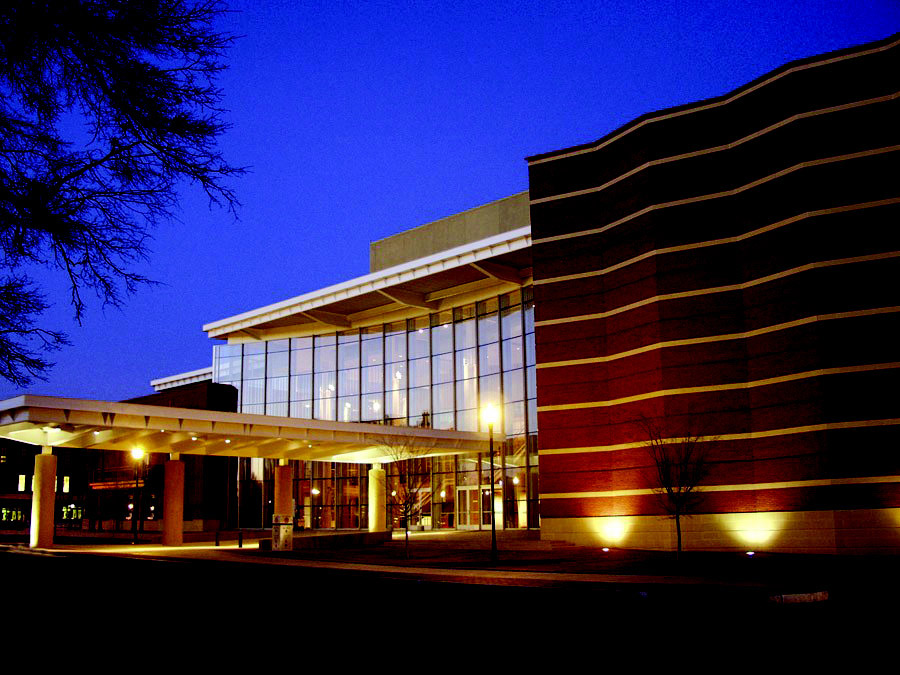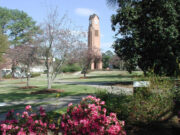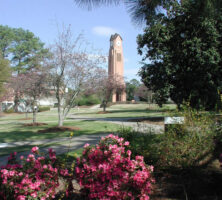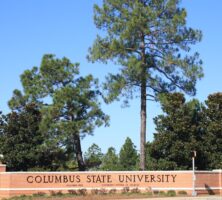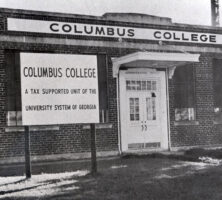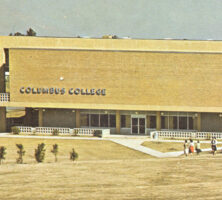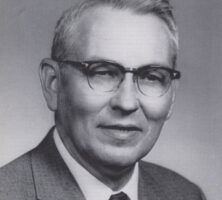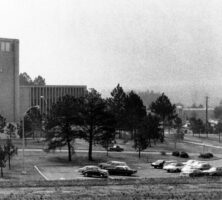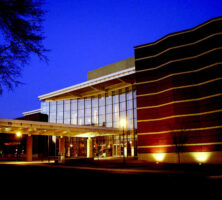Founded in 1958, Columbus State University (CSU) has played a significant role in the cultural and economic development of the city of Columbus and Muscogee County. In the fall of 2003 CSU enrolled 6,937 students. More than 55 percent of the area’s teachers, including 90 percent of its music teachers, are CSU graduates, as are more than 70 percent of its law enforcement officers and 80 percent of its nurses. Hundreds of alumni are local business and political leaders. Many of these professionals could not have afforded higher education without access to CSU. Some of them are members of the Columbus State University Foundation (chartered in 1963 as the Columbus College Foundation) and contribute to making this private fund-raising group among the most successful organization of its kind among the University System of Georgia’s regional state universities. The foundation’s support has helped gain regional and national recognition for the university’s Schwob School of Music. CSU’s 1996 partnership with the state of Georgia and Columbus-based Total System Services in the training of computer programmers marked the first application of the University System’s Intellectual Capital Partnership Program (ICAPP), a venture in regional economic development.
Founding
Community support is a legacy of the university’s origin in an effort by the Muscogee County school board to create a junior college. In the late 1940s and the 1950s, local promoters of higher education solicited funds to purchase the campus on farmland six miles northeast of downtown Columbus and to furnish it with roads and sewer and water lines. By 1958 they had raised the monies necessary to construct the junior college’s first four buildings. In May 1958 the local school board agreed to donate these properties once built to the University System’s Board of Regents in exchange for University System membership and the promise of long-term system funding for faculty, staff, and future construction.
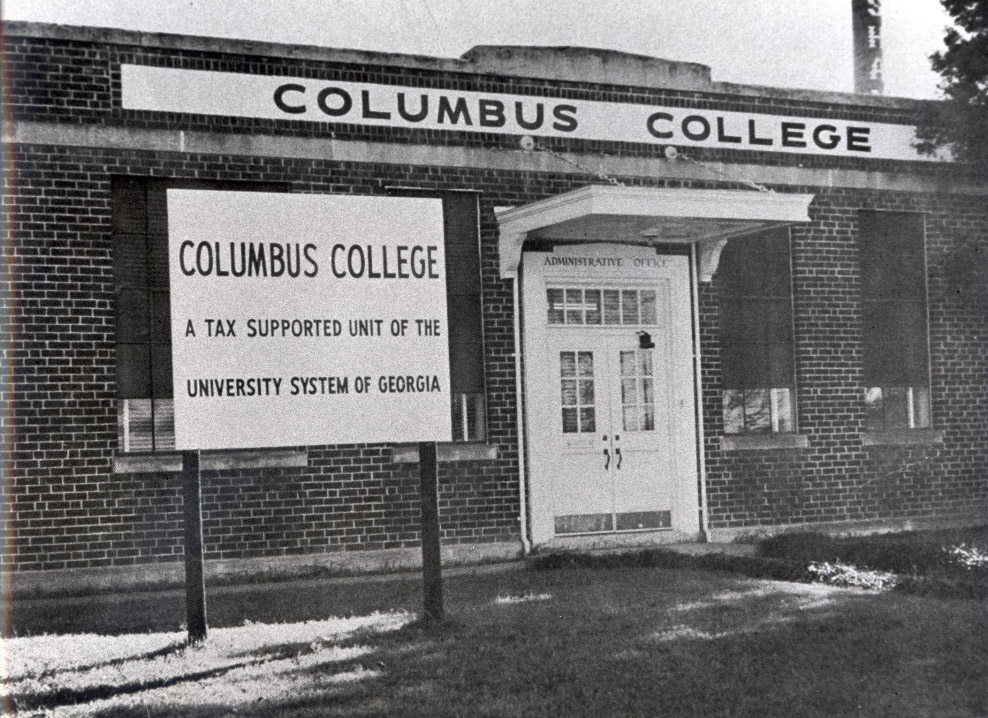
Because therouting of a major transportation artery through a portion of its campus delayed construction of buildings, Columbus College opened its doors in September 1958 in a renovated hosiery mill a few miles away. The agreement of 1958 thus was not formalized until January 1963, when Columbus College began operating on its own campus.
Junior College to Four-Year Institution, 1958-1979
The regents appointed Thomas Y. Whitley as Columbus College’s first president in May 1958, on the same day that they voted to make the school part of the University System. A native of south Georgia, Whitley had earned an Ed.D. degree in junior college administration, had served as dean of South Georgia College, and was working for the Board of Regents at the time. His folksy manner and rural colloquialisms immediately made him popular with the local promoters of the junior college, many of whom became charter members of the Columbus College Foundation. Whitley led the institution from the hosiery mill years (1958-62) through its move to the permanent campus; he also oversaw the transition to senior college status (approved by the Board of Regents in 1965) and handed out the institution’s first bachelor’s degree diplomas in 1970. By the mid-1970s CSU was offering master’s degrees in education and business.
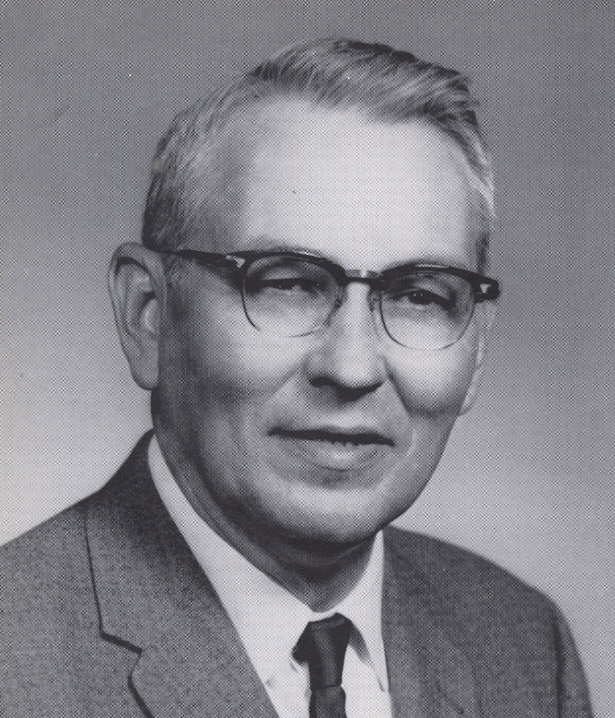
Although he and the local founders initially conceived of the college as a white institution, Whitley bowed to the pressures of Black activists and admitted the first Black student in the fall of 1963, two years after the desegregation of public higher education in Georgia. In 1970, when African American students and some white faculty protested against the Confederate rebel as school mascot and the gray and gold school colors, Whitley struck these down in favor of the cougar as mascot and red, white, and blue as school colors, which have endured as institutional emblems.
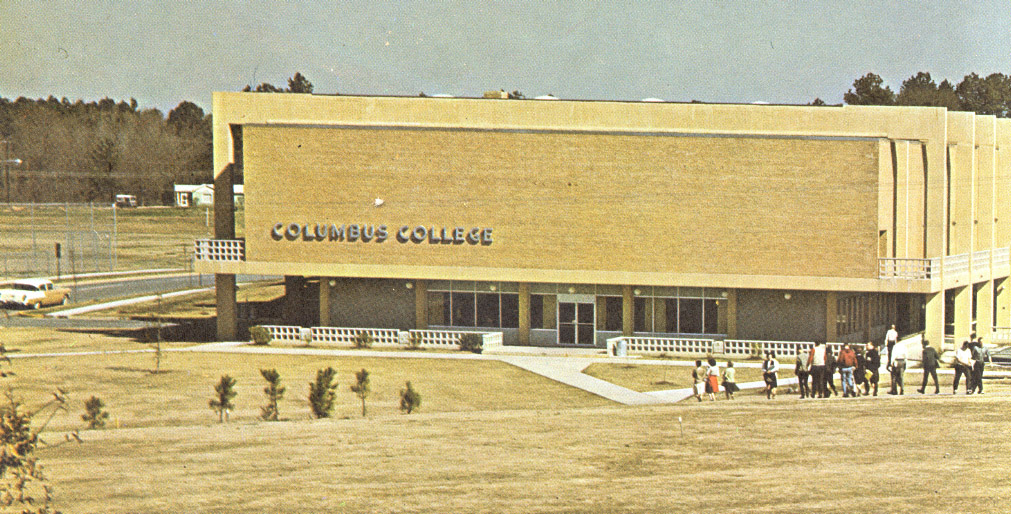
During the late 1960s and early 1970s, the coming of age of the baby-boom generation and the Vietnam War–induced growth of Fort Benning (now Fort Moore), about ten miles south of Columbus, contributed to a rapid increase in enrollment, which peaked at about 5,600 in 1976. Increased state and federal funding combined with the generous assistance of the Columbus College Foundation enabled Whitley to add faculty, staff, and new degree programs and buildings to accommodate the growing student population. In the late 1970s, however, enrollments declined steadily for several reasons: most of the postwar baby-boomers were now past college age, Fort Benning suffered personnel cuts after the Vietnam War, and many of the courses that Columbus College formerly offered on the base had been taken over by Troy State University.
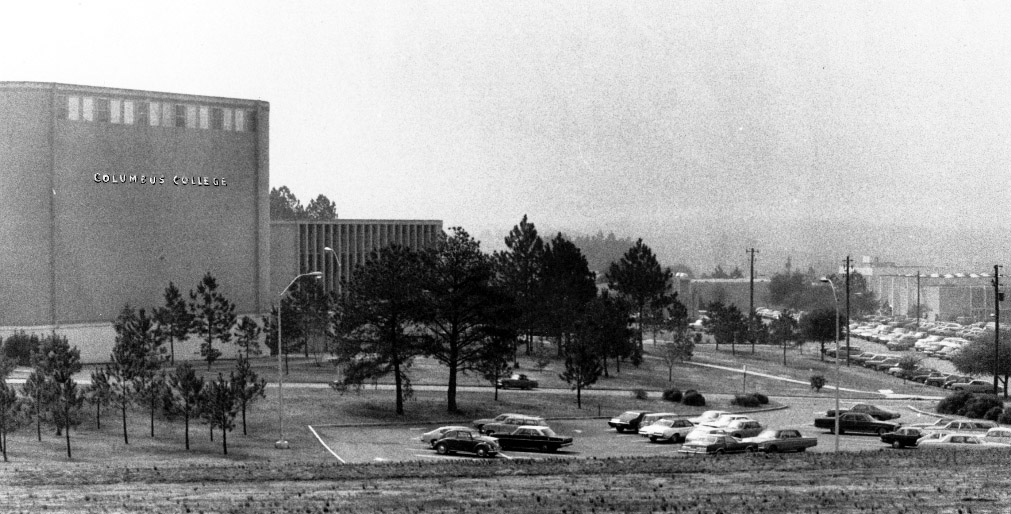
Reorganization and Retrenchment, 1980-1987
Whitley retired in 1979, and Francis J. Brooke, a former professor of German and provost at Virginia Commonwealth University in Richmond, Virginia, became the college’s second president in 1980. Declining enrollments and shrinking budgets continued to plague the college throughout Brooke’s tenure, forcing him to eliminate several faculty positions. Early in his tenure, he introduced a requirement customary at true senior colleges: that faculty members seeking tenure and promotion publish in refereed journals and deliver papers at academic meetings. Brooke also reorganized the college’s administrative structure, formerly based on junior college–style divisions, into Schools (since 1998, Colleges) of Arts and Letters, Science, Education, and Business.

Tensions developed between Brooke and the faculty as a result of his reforms. The pressure to publish, along with rivalry for the new positions created by reorganization, undoubtedly contributed to faculty resentment, which was deepened by the impact of budget cuts. Faculty protests and an investigation of their grievances by the chancellor of the University System led to Brooke’s resignation at the end of 1987. In spite of these difficulties, Brooke’s initiatives did push the college toward academic maturity. He also worked to hire more African American faculty and staff, orchestrated a Silver Anniversary Celebration in 1983-84 that raised more than $6 million, and considerably beautified the campus grounds.
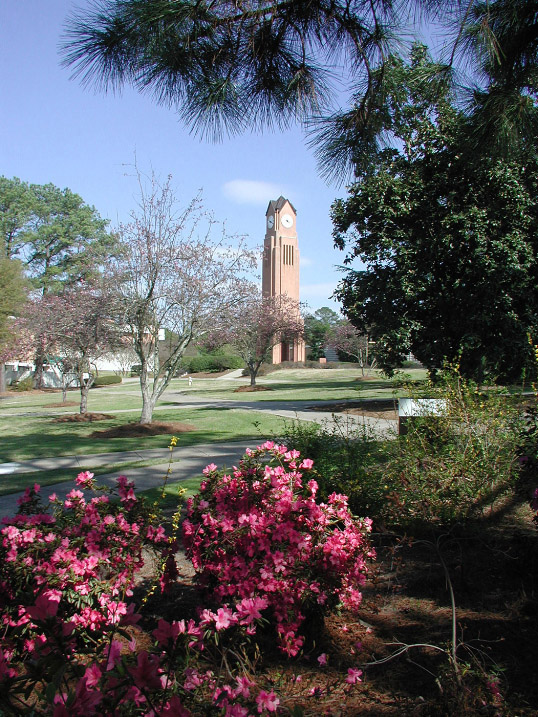
From College to State University, 1988 to the Present
The college’s vice president for business and finance, Frank D. Brown, was appointed the institution’s third president in 1988. Benefited by steadily rising enrollments, Brown quickly restored faculty and staff morale on campus and reestablished the close town-gown relationship forged by Whitley. Inviting full participation of faculty and staff, Brown initiated strategic planning sessions to prepare the college to function as a university, meeting the specific educational, cultural, and economic needs of its service area of west central Georgia. In 1996 the Board of Regents approved Brown’s request to rename the institution Columbus State University.
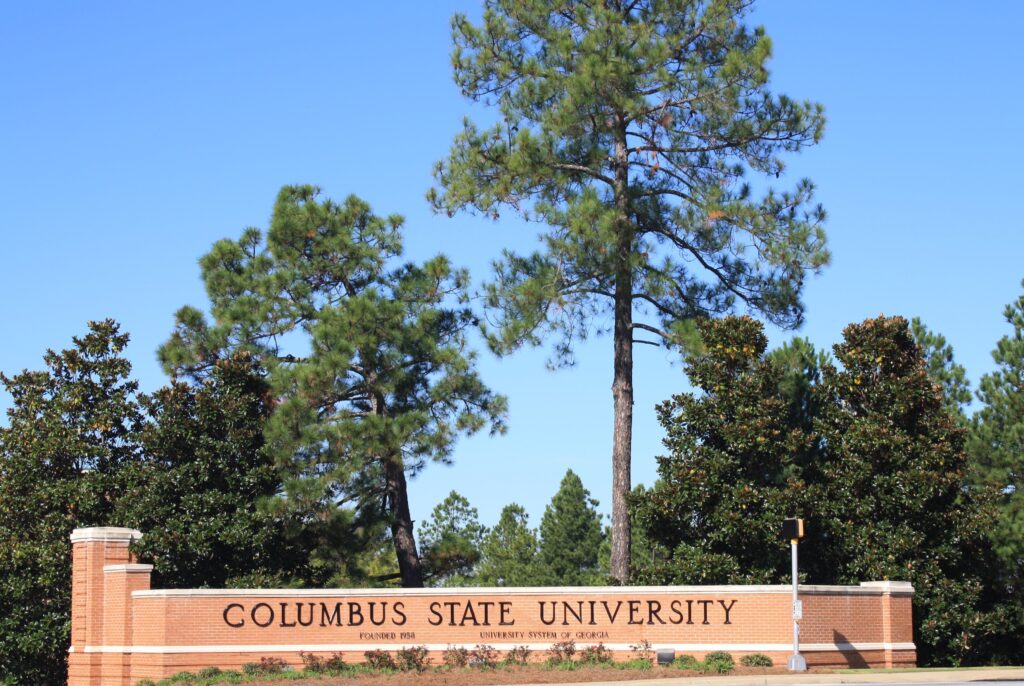
CSU, in partnership with the University System, the state of Georgia, the Columbus Consolidated Government, the Muscogee County School District, and locally based corporations, has developed several branch campuses, including the Oxbow Meadows Environmental Learning Center on the Chattahoochee River in south Columbus and the Coca-Cola Space Science Center in downtown Columbus. Also downtown, the RiverCenter for the Performing Arts houses the Schwob School of Music. The CSU Foundation has purchased and renovated downtown buildings as dormitories for music students, and other CSU-owned downtown properties are slated to house the Departments of Art and Theater. Thus the university has become a key factor in the renewal of downtown Columbus as a hub of commerce, recreation, and entertainment.
